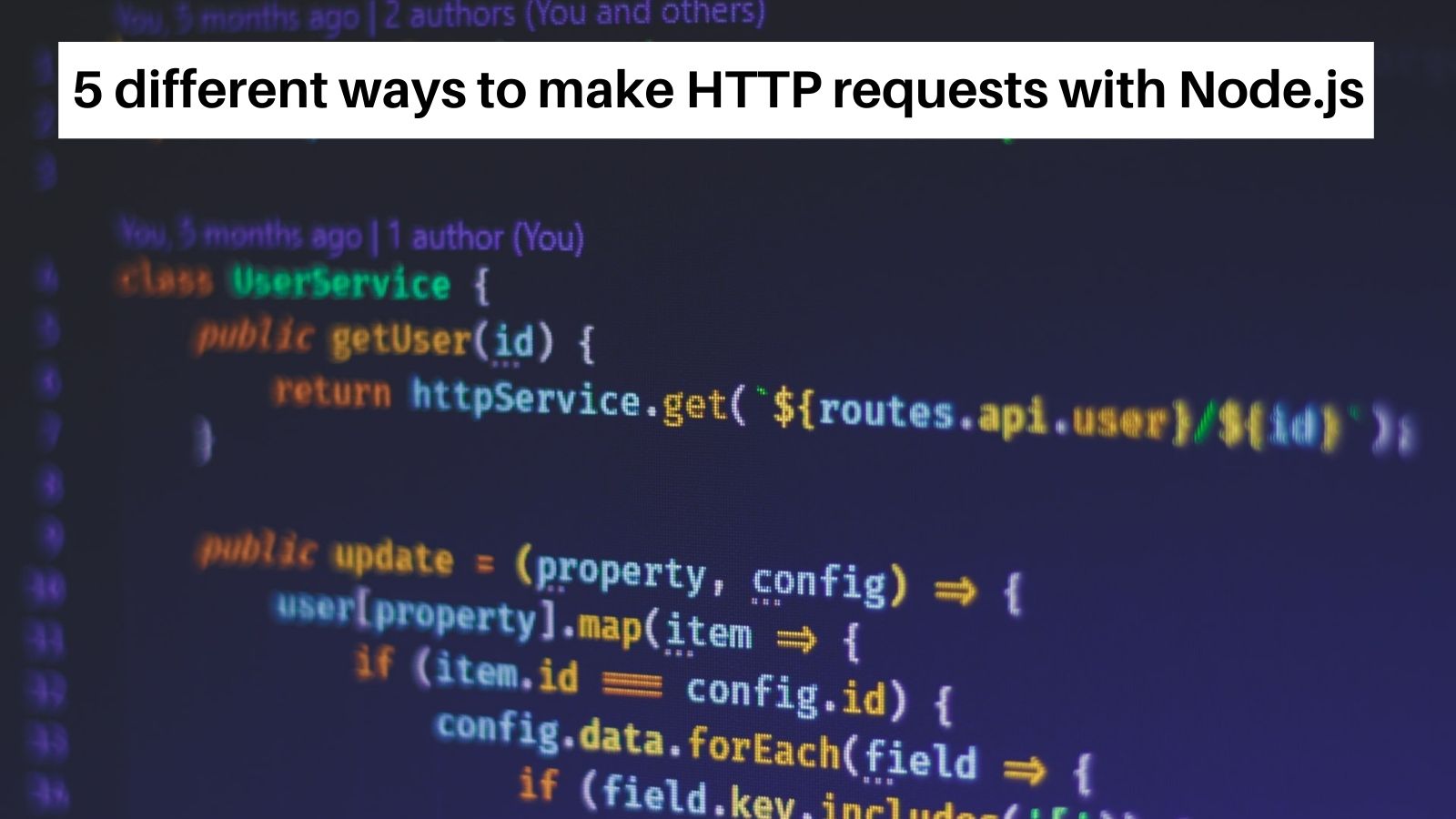
Save and exit nano with CTRL+X, or the equivalent with your text editor. If you don’t call it, the program will never complete, as Node.js will think you still have data to add to the request. It completes the request, allowing it to be sent. This is an important method that must be called when using the request() function. You also call the end() method of the request variable. HTTP Node.js v18.8.0 Documentation Node.js v18.8.0 documentation Table of contents HTTP Class: http.Agent new Agent ( options) agent. The callback is unchanged from when you first wrote it. The options variable you created earlier is the second argument, telling Node.js that this is a GET request. To make a request using request(), you provide the URL in the first argument, an object with the HTTP options in the second argument, and a callback to handle the response in the third argument. get ( URL_String, Callback_Function ) ) HTTP requests using the get() function have this format: https. As an example, we are going to preform a GET request to (which returns a random integer between 1 and 10) and print the result to the console. You will begin by making a request with the get() function. Node.js provides an extremely simple API for this functionality in the form of http.request. The https module has two functions to make GET requests-the get() function, which can only make GET requests, and the request() function, which makes other types of requests.
NODEJS HTTP REQUEST CODE
Your code will retrieve a JSON array of user profiles from a publicly accessible API. In this step, you’ll look at two functions to make GET requests in Node.js. When you interact with an API, you typically make GET requests to retrieve data from web servers. If you are curious, you can get more in-depth knowledge of event emitters by reading our Using Event Emitters in Node.js guide. The way in which you respond to data coming from a stream is the same as the way in which you respond to data from events. In Node.js, streams are instances of event emitters. The methods used to send HTTP requests have a Stream-based API.
NODEJS HTTP REQUEST HOW TO
To install Node.js on macOS or Ubuntu 18.04, follow the steps in How To Install Node.js and Create a Local Development Environment on macOS or the Installing Using a PPA section of How To Install Node.js on Ubuntu 18.04. This tutorial uses Node.js version 10.19.0. Once installed, you will be able to access the https module that’s used throughout the tutorial. This tutorial requires that you have Node.js installed.

Finally, you will make POST, PUT, and DELETE requests so that you can modify data in an external server. You will then look at ways to customize your request, such as by adding headers. You will begin by making a GET request, the standard HTTP request to receive data.

In this tutorial, you will use the https module to make HTTP requests to JSON Placeholder, a fake REST API for testing purposes. As it’s a core module, you do not need to install any libraries to use it. It is just a wrapper around Nodes native HTTPS module but is much more simple and more user-friendly. This key functionality equips Node.js programmers to create modern, API-driven web applications with Node.js. The Request module is one of the most popular Node.js packages for making HTTP requests. They can also make HTTP requests to other servers. These modules have functions to create an HTTP server so that a Node.js program can respond to HTTP requests.

Node.js comes bundled with an http and an https module. In a Node.js app, you can communicate with web APIs by making HTTP requests. In this design, the different services communicate via web APIs-standard formats that allow you to programmatically send and receive data. The req object represents the HTTP request and has properties for the request query string, parameters, body, HTTP headers, and so on. For example, a web app that allows you to purchase a book online may involve communication between a customer orders server, a book inventory server, and a payment server. It’s common for a modern web application to communicate with other servers to accomplish a task. Read this guide to learn more about making HTTP requests using the Request module in Node.js.The author selected the COVID-19 Relief Fund to receive a donation as part of the Write for DOnations program. Here is an example that makes an HTTP GET request using Axios: const axios = require ( 'axios' )Ĭonsole. To install Axios, run the following command in your terminal from your root directory: $ npm install axios -save It automatically transforms the response data into a JSON object. The simplest and most popular way to perform an HTTP request in Node.js is using the Axios library.Īxios is a promise-based HTTP client for the browser and Node.js. You can use either the standard HTTP/HTTPS module or one of the NPM packages like Axios, Needle, Got, SuperAgent, and node-fetch.īefore we dive into code and description, make sure that you have installed the latest LTS versions of Node.js and npm on your machine. There are many ways to make HTTP requests in Node.js.


 0 kommentar(er)
0 kommentar(er)
